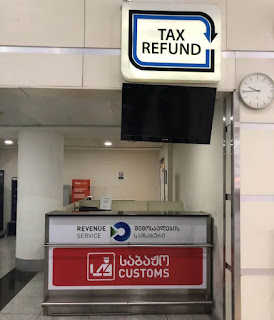Trans-Atlantic Repositioning Cruise from USA to Europe
Trans-Atlantic repositioning cruise and a travel story from Fort Lauderdale, Florida, USA to Spain, Europe.
Flying is not the only inexpensive option for intercontinental travel. One can hitch-hike or volunteer to work on sail boats crossing the ocean, or take a cruise like we did when leaving from Fort Lauderdale, Florida to Barcelona, Spain.
The total cost is higher than the list price
We are not sure if cruising is more ecological than flying, but at least repositioning cruises cost only a little bit more than flying and you get to spend two weeks in a luxurious stateroom and eat in buffets or à la carte restaurants instead of stuffing yourself to a cramped airplane seat for eight hours. The list price for a repositioning cruise is around US $400-600/person for the cheapest staterooms with the minimum of two persons in the room.
The rationale behind repositioning cruises is that ships circle the Caribbean during the winter and the Mediterranean during the summer. When the season changes, the ships need to be relocated and that's when the bargain list prices kick in. On top of the purchase price you have to pay about $75 of taxes. These are the obligatory costs. On top of that, the cruise company will require you to make about $1000 deposit either in cash or by registering your credit card in order to cover the services and other consumables with an extra charge. This deposit was returned to us after the cruise for we didn't use any paid services.
Cruise line will charge about $15 tips per person per day unless you adjust this automatic service charge when entering the ship. You can simply go to the front desk and tell the amount you are ready to pay, and sign a form. On top of that, drinking alcohol, or using spa, internet, and other paid services are likely to cost you an arm and a leg. In restaurants, $4-5 wine bottles can cost over $50, and a half an hour in a steam sauna $200.
All American dream food
The menu is designed to satisfy Americans. There is a lot of fat, sugar and meat available. Food is served four times a day: breakfast at 6:30-10am, lunch at 11:30-2pm, dinner a 5:30-8pm, and late night snack around 11pm. Ice cream and some grill foods are available all day long in the pool bar. In our ship, there was one buffet and one à la carte restaurant included in the price, and two other restaurants with an extra fee. All the menus looked pretty identical giving no reason for paying extra except for maybe showing off. The à la carte restaurant has both casual and formal dress code nights.
Finding foods that were not soiled with cream, butter and flesh was sometimes a bit challenging. We ended up eating mostly raw fruits and vegetables, toast or rolls, french fries, and beans. There were some pleasant surprises, too. Occasionally we found sun-dried tomatoes, hummus, raw mushrooms, artichokes, sorbet, sunflower and pumpkin seeds, raisins, dried apricots, plums, dates, figs, Italian cheeses, and very rarely some nuts.
You will not starve during the cruise if you are willing the take the few extra kilos for eating unhealthy, sugary and salty food. Following any strict diet makes eating a bit monotonous.
Entertaining yourself on the high seas
Experiencing the great seas for two weeks can be a relaxing or a boring experience. All you see is waves. If you get lucky, you can spot a whale coming up to breathe. We saw a killer whale and another whale we could not recognise. Other than that, the journey is about eating, socialising and having a good time. There are free DVD films for watching and also some onboard entertainment, but the latter mainly seems to appeal to the elderly passengers — e.g. bingo, card playing, guest lectures and cooking lessons. For staying fit and burning some calories, there is a gym, small swimming pools and a walking or jogging track. The ship offered internet connection via satellite for $50/hour temporarily curing our internet addiction. Telephone calls cost around $10 per minute.
We got a flu during the first days of our cruise and some co-passengers were suffering from sea sickness, but fortunately there was no diarrhea epidemic. There are hand sanitisers available everywhere in the ship and the personnel reminds people of hygiene.
The boat stopped a few times on the way for one day and they offered shore excursions costing $70-180. We took a walk ashore for free and looked for a free wifi to check our email. When purchasing alcohol from ashore, there are extra fees and all your belongings are scanned. Bringing, for example, a wine bottle to the ship was subject to $18 corkage fee. Another option is to let them confiscate the bottle and return it to you in the final destination.
Book a cruise?
A transatlantic cruise might be an option for you if you are not in a hurry, you are not an alcoholic or a gambling or internet addict, and you don't get easily bored. It costs a couple of hundred of dollars more than a flight, but provides an alternative means to trans-continental travel without jetlag and ridiculous luggage size and weight limitations.
There are various agents selling cruises and one website for competing prices. Agents might be useful if you want to have some free onboard credits to spend. Otherwise buying the cruise directly from the cruise line can be the safest and easiest option because everyone has about the same price and they have adequate online purchase systems whereas some agents require you to email them insecurely your credit card details. As a rule of thumb, the longer you wait, the better price you will get.









Comments